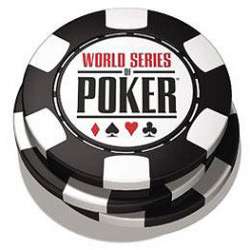 Yet another Championship event was held in Event 11: Omaha Hi-Low Split – 8 or better. 202 players ponied up the $10,000 entry fee for their shot at winning a WSOP bracelet and, of course, the first place prize of $465,216.
Yet another Championship event was held in Event 11: Omaha Hi-Low Split – 8 or better. 202 players ponied up the $10,000 entry fee for their shot at winning a WSOP bracelet and, of course, the first place prize of $465,216.
Of the 202 entrants, many were well known names and faces. Jason Mercier, Shaun and Freddy Deeb, and a man putting together a hot 2011 WSOP run in Alessio Isaia all finished in the money in the event, making just north of $16,000.
The final table also featured some impressive players, including Josh Arieh, Richard Ashby, Steve Billirakis, and George Lind III. Arieh, Ashby, and Billirakis were all trying to add another bracelet to their shelves. Lind, while not having a bracelet of his own, has had his share of success in the past, including being the first Supernova Elite in 2008.
Lind had the best shot of the group, going heads-up against Viacheslav Zhukov. Sadly, the Gilbert, Arizona native came up short on his closest bid for a bracelet, and had to settle for his quarter million second place prize.
Zhukov, well noted for his quiet demeanor, won his first bracelet in this event, and will try to parlay this win into further finishes to come.

